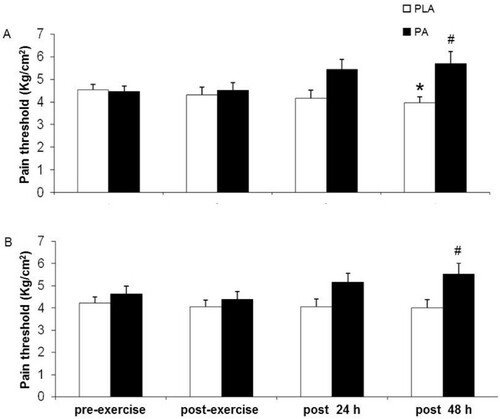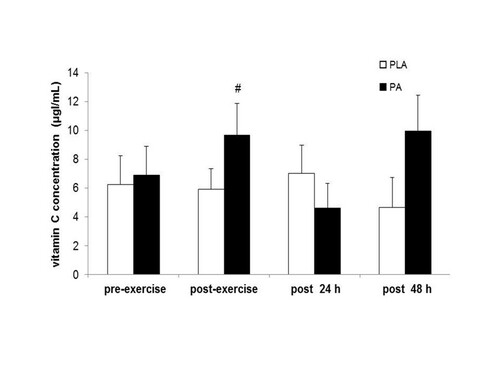Figures & data
Table 1 Anthropometry, body composition and physical fitness of participants
Table 2 Baseline blood parameters of participants
Table 3 Dietary composition, energy intake and energy expenditure of participants
Figure 1 Levels of pain threshold on the right leg (A) and left leg (B) before exercise (pre-exercise), immediately after (post-exercise), and 24 h (post 24 h) and 48 h (post 48 h) after high-intensity exercise. Values are presented as mean ± SE (n = 12). PLA, placebo. *Significantly different from before exercise (p < 0.05), #significantly different from the PLA group at the same time point (p < 0.05).

Figure 2 MDA concentration before exercise (pre-exercise), immediately after (post-exercise), and 24 h (post 24 h) and 48 h (post 48 h) after high-intensity exercise. Values are presented as mean ± SE (n = 12). MDA, malondialdehyde; PLA, placebo @Significantly different from the PLA group at the same time point (p < 0.01).

Figure 3 Vitamin C concentration before exercise (pre-exercise), immediately after (post-exercise), and 24 h (post 24 h) and 48 h (post 48 h) after high-intensity exercise. Values are presented as mean ± SE (n = 12). PLA, placebo. #Significantly different from the PLA group at the same time point (p < 0.05).

Table 4 CK, NO˙, hs-CRP concentrations and leukocyte counts before the exercise (pre-exercise), immediately (post-exercise), 24 h (post 24 h) and 48 h (post 48 h) after the high–intensity exercise
